#Jaguar E-Type Series II
Photo
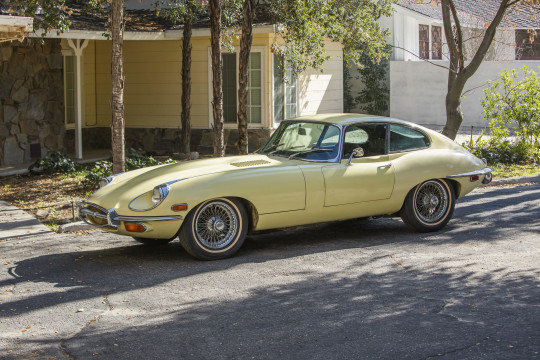
Jaguar E-Type Series II
Image by Michael Diestelbruch
129 notes
·
View notes
Text

1968 Jaguar E-Type Series II
@jetwithcars
#1968 Jaguar E-Type Series II#exotics#fitment#static#stance#modified#tuning#imports#tuner#retro rides#lowered cars#60s sports cars#classic car#vintage cars#rhd
104 notes
·
View notes
Text

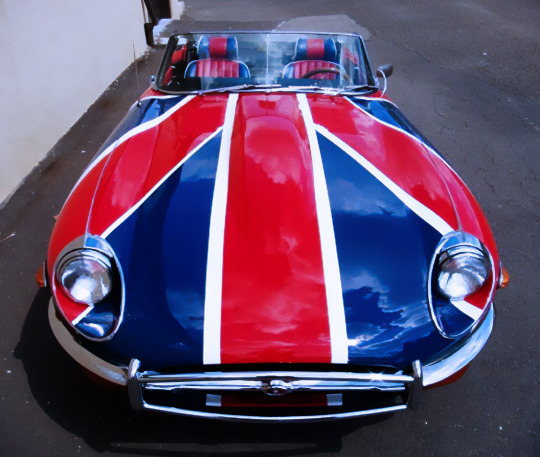
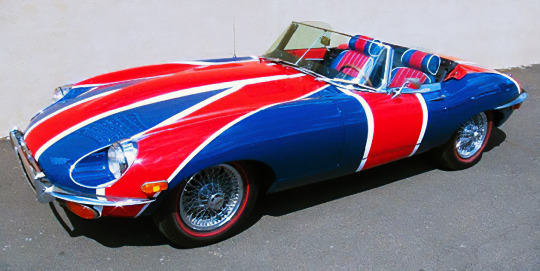
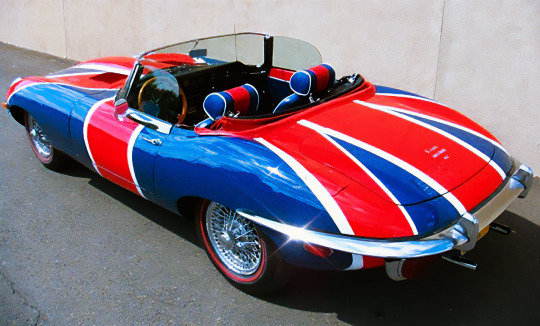

Shaguar, 1970 (1997). Austin Powers' "shagadelic" Jaguar E-Type Series II Roadster first appeared in the original 1997 "Austin Powers, International Man of Mystery" movie starring Mike Myers. The Union Flag livery extends to the red and blue leather (with white trim) interior. It is, of course, available as a scale model.
NB: The colloquial English term "shag" refers to sexual intercourse
#Jaguar#Jaguar E-type#Shaguar#Jaguar E-Type Series II Roadster#1970#1997#movie cars#Austin Powers#union flag#union jack#custom car#modified car#scale model#wire wheels#E-Type#Jaguar E-Type
354 notes
·
View notes
Text




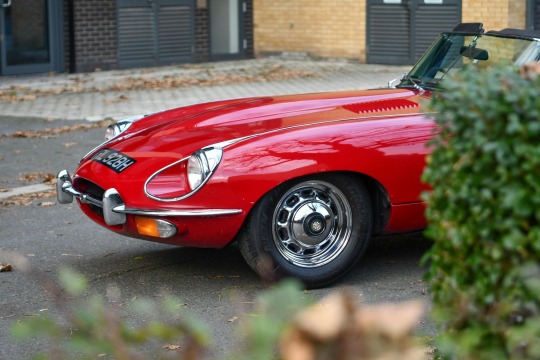


Jaguar E-Type 4.2 Roadster Series II 1969. - source Car & Classic.
69 notes
·
View notes
Text

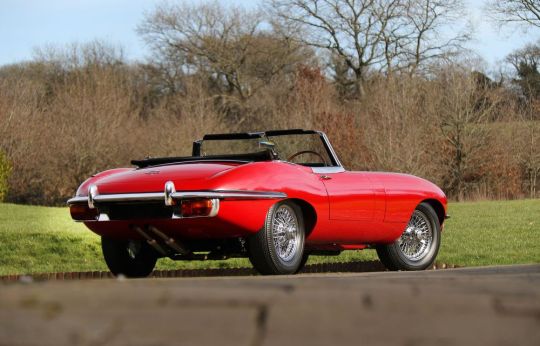
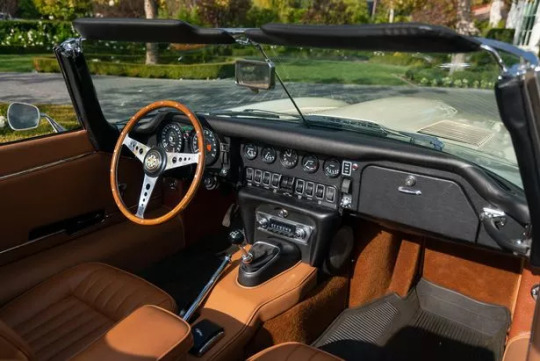
1968 Jaguar E-Type Roadster Series II
My tumblr-blogs: https://www.tumblr.com/blog/germancarssince1946 & https://www.tumblr.com/blog/frenchcarssince1946 & https://www.tumblr.com/blog/englishcarssince1946 & https://www.tumblr.com/blog/italiancarssince1946 & https://www.tumblr.com/blog/japanesecarssince1947
2 notes
·
View notes
Text
Luxury car rental in Goa self-drive
Introduction:
Goa, with its sun-kissed beaches, vibrant nightlife, and rich cultural heritage, has long been a destination synonymous with relaxation and indulgence. For those who seek to elevate their travel experience, a luxury self-drive car rental in Goa presents an unparalleled opportunity to explore the region with style and sophistication. In this comprehensive guide, we will delve into the allure of luxury self-drive car rentals in Goa, the unique offerings of opulent vehicles, and the key considerations for an unforgettable and indulgent journey.

I. The Allure of Luxury Self-Drive Car Rentals in Goa:
A. Tailored Luxury:
Luxury self-drive car rentals in Goa offer an experience that goes beyond transportation – it's a lifestyle. The allure lies in the ability to tailor the journey to personal preferences, from selecting high-end vehicles to curating a bespoke itinerary that aligns with the traveler's desires.
B. Freedom and Flexibility:
Unlike traditional guided tours or group transportation, luxury self-drive rentals provide a level of freedom and flexibility that is unparalleled. Travelers have the autonomy to choose their destinations, explore at their own pace, and deviate from the beaten path to discover hidden gems, all while cocooned in the lap of luxury.
C. Opulent Comfort:
Luxury vehicles are synonymous with opulent comfort. From sumptuous leather interiors to cutting-edge technology and amenities, the experience of driving a luxury car in Goa is akin to being in a mobile sanctuary of comfort and style.
II. The Fleet of Opulence: Luxury Vehicles for Self-Drive in Goa
A. High-End Convertibles:
The coastal roads of Goa are best experienced with the top down and the wind in your hair. High-end convertibles, such as the Jaguar F-Type or the Mercedes-Benz E-Class Cabriolet, offer a perfect blend of performance and open-air extravagance.
B. Prestigious Sedans:
For those who prefer a sleek and sophisticated ride, prestigious sedans like the BMW 7 Series or the Audi A8 provide an exceptional driving experience. These vehicles combine elegance with cutting-edge technology for a truly luxurious journey.
C. Sporty Exotics:
Driving a sports car is an experience like no other. Luxury car rental services in Goa often offer exotic options such as the Lamborghini Huracán or the Ferrari 488 Spider, allowing travelers to turn heads as they navigate the scenic roads of Goa.
D. Spacious SUVs:
Luxury SUVs cater to those who crave both opulence and practicality. Models like the Range Rover Vogue or the Bentley Bentayga offer ample space, advanced features, and the ability to conquer diverse terrains, making them ideal for exploring Goa's varied landscapes.
III. Elegance in Every Detail: The Unique Offerings of Luxury Self-Drive Car Rentals
A. State-of-the-Art Features:
Luxury vehicles are equipped with state-of-the-art features that redefine the driving experience. From advanced infotainment systems to cutting-edge safety technologies, every detail is meticulously designed to enhance both comfort and convenience.
B. Impeccable Interior Design:
Step inside a luxury car, and you're enveloped in a world of refined elegance. Impeccable interior design, premium materials, and attention to detail create an ambiance of opulence that adds an extra layer of pleasure to the journey.
C. Personalized Service:
Many luxury self-drive car rental services go beyond providing a vehicle; they offer a personalized and attentive service. From concierge assistance to seamless rental processes, travelers are treated to a level of service that complements the sophistication of the vehicle.
D. Exclusive Access:
Some luxury car rental services provide exclusive access to premium events, VIP lounges, or curated experiences. This adds an extra dimension to the journey, allowing travelers to immerse themselves in the local culture and lifestyle.
IV. Crafting an Indulgent Itinerary: Luxury Experiences in Goa
A. Coastal Cruises:
The coastal roads of Goa offer an idyllic setting for a luxury self-drive experience. Cruise along the shoreline, stopping at scenic viewpoints, pristine beaches, and beachside cafes for a leisurely and opulent journey.
B. Fine Dining Escapades:
Goa boasts a culinary scene that marries local flavors with global influences. Indulge in fine dining experiences at renowned restaurants, perhaps arriving in style with a luxury car rental to complement the exquisite cuisine.
C. Sunset Yacht Cruises:
For the ultimate luxury experience, complement a self-drive adventure with a private yacht cruise during the golden hour. Revel in the breathtaking views of the sunset over the Arabian Sea, creating memories that linger long after the journey ends.
D. Spa Retreats and Wellness:
Goa is home to luxurious spas and wellness retreats that offer a rejuvenating escape. Combine the thrill of a self-drive in a luxury car with indulgent spa treatments, creating a holistic and opulent experience.
V. Tips for an Optimal Luxury Self-Drive Car Rental Experience:
To ensure an optimal luxury self-drive car rental experience in Goa, travelers can follow these tips:
A. Plan Ahead:
Plan the itinerary in advance, taking into account preferred destinations, dining experiences, and leisure activities. This ensures a seamless and well-organized journey.
B. Utilize Concierge Services:
Leverage the concierge services offered by luxury car rental providers. They can assist with restaurant reservations, event tickets, and other exclusive experiences, adding an extra layer of convenience and indulgence to the trip.
C. Opt for Special Packages:
Many luxury car rental services offer special packages that include additional amenities or services. Explore these packages to enhance the overall experience, whether it's a spa voucher, a guided tour, or exclusive access to events.
D. Embrace Spontaneity:
While planning is crucial, leave room for spontaneity. Some of the most memorable experiences happen when travelers embrace the unexpected and allow the journey to unfold organically.
Conclusion:
A luxury self-drive car rental in Goa is more than a means of transportation; it's an invitation to indulge in the finest experiences that this coastal paradise has to offer. From the diverse fleet of opulent vehicles to the state-of-the-art features and meticulous attention to detail, luxury car rentals elevate the travel experience to new heights. Whether cruising along the coastline in a convertible, savoring fine dining experiences, or embarking on a spa retreat, every moment becomes a celebration of opulence and sophistication. As travelers explore Goa's landscapes in style, the luxury self-drive car becomes not just a mode of transportation but a key to unlocking a world of indulgence and unforgettable memories
#self drive car rental in goa airport#Self Drive Car Rental in Goa#Rent a Self drive car in Goa#Book self drive car in goa#Luxury car rental in Goa self drive#Best Self drive car rental in Goa
0 notes
Text
Need For Speed é uma das franquias de corrida mais clássicas dos jogos eletrônicos, lançada em 1994, e promete se superar no novo game, chamado Need For Speed Unbound.
PUBLICIDADE
A Criterion Games e a Electronic Arts revelaram que o próximo jogo vai contar com um catálogo com 143 modelos de carro, superando a quantidade disponível no NFS: Heat, com 127 no total. São eles:
Acura NSX 2017
Acura RSX-S 2004
Alfa Romeo Giulia Quadrifoglio 2016
Aston Martin DB5 1964
Aston Martin DB11 Volante 2018
Aston Martin DB11 2017
Aston Martin Vulcan 2016
BMW M3 2006
BMW M3 Evolution II 1988
BMW X6 M 2016
BMW M3 2010
BMW M5 2018
BMW Z4 M40i 2019
BMW M4 Coupe 2018
BMW M2 Competition 2019
BMW M1 1981
BMW i8 Coupe 2018
BMW M4 GTS 2016
BMW M3 Convertible 2010
BMW M4 Convertible 2017
BMW i8 Roadster 2018
Bugatti Chiron Sport 2017
Buick Grand National GNX 1987
Chevrolet Corvette Stingray 2020
Chevrolet Corvette Stingray Convertible 2020
Chevrolet C10 Stepside Pickup 1965
Chevrolet Corvette Grand Sport 2017
Chevrolet Camaro Z28 2014
Chevrolet Corvette Z06 2013
Chevrolet Camaro SS 1967
Chevrolet Bel Air 1955
Chevrolet Corvette ZR1 2019
Chevrolet Colorado ZR2 2017
Dodge Challenger SRT8 2014
Dodge Charger R/T 1969
Dodge Charger SRT Hellcat 2019
Ferrari LaFerrari 2016
Ferrari Testarossa Coupé 1984
Ferrari 488 GTB 2016
Ferrari F40 1988
Ferrari 458 Italia 2009
Ferrari 488 Pista 2019
Ferrari FXX-K Evo 2018
Ferrari 458 Spider 2011
Ford F-150 Raptor 2017
Ford Mustang GT 2015
Ford GT 2017
Ford Mustang BOSS 302 1969
Ford Mustang 1965
Ford Mustang Foxbody 1990
Ford Crown Victoria 2008
Ford Focus RS 2016
Ford Mustang GT Convertible 2019
Honda Civic Type-R 2000
Honda Civic Type-R 2015
Honda NSX Type-R 1992
Honda S2000 Ultimate Edition 2009
Infiniti Q60S 2017
Jaguar F-Type R Coupe 2016
Jaguar F-Type R Convertible 2019
Koenigsegg Regera 2016
Lamborghini Countach LPI 800-4 2021
Lamborghini Huracán LP580-2 2018
Lamborghini Aventador S 2018
Lamborghini Countach 25th Anniversary 1989
Lamborghini Murciélago SV 2010
Lamborghini Urus 2018
Lamborghini Huracán Performante 2018
Lamborghini Aventador SVJ Coupe 2019
Lamborghini Diablo SV 1995
Lamborghini Huracán LP580-2 Spyder 2018
Lamborghini Aventador S Roadster 2018
Lamborghini Aventador SVJ Roadster 2019
Lamborghini Aventador LP750-4 SV Roadster 2018
Lamborghini Huracán Performante Spyder 2018
Land Rover Range Rover Sport SVR 2015
Land Rover Defender 110 Double Cab Pickup 2015
Lotus Exige S 2006
Lotus Emira 2021
Mazda RX-7 Spirit R 2002
Mazda MX5 1996
Mazda RX-8 Spirit R (R3) 2011
Mazda MX5 2015
McLaren P1 2014
McLaren F1 1993
McLaren 570S 2015
McLaren 570S Spider 2018
McLaren 600LT 2018
McLaren P1 GTR 2015
Mercedes-Benz 190E 2.5-16 1988
Mercedes-AMG C 63 Coupe 2018
Mercedes-AMG G 63 2017
Mercedes-AMG GT S 2019
Mercedes-AMG A 45 2016
Mercedes-AMG GT R 2017
Mercedes-AMG GT S Roadster 2019
Mercedes-AMG C 63 Cabriolet 2018
Mercedes-AMG GT Black Series 2021
Mercury Cougar 1967
MINI John Cooper Works Countryman 2017
Mitsubishi Lancer Evolution IX 2007
Mitsubishi Lancer Evolution X 2008
Mitsubishi Eclipse GSX 1999
NISSAN GT-R Premium 2017
NISSAN Skyline GT-R V·Spec 1999
NISSAN 370Z Heritage Edition 2019
NISSAN Silvia K’s 1998
NISSAN Z Prototype 2022
NISSAN Silvia Spec-R Aero 2002
NISSAN Skyline GT-R V·Spec 1993
NISSAN 350Z 2008
NISSAN Skyline 2000 GT-R 1971
NISSAN Fairlady 240ZG 1971
NISSAN 180SX Type X 1996
NISSAN 370Z Nismo 2015
NISSAN GT-R Nismo 2017
Pagani Huayra BC 2017
Plymouth Cuda 1970
Polestar Polestar 1 2020
Pontiac Firebird 1977
Porsche 911 GT3 RS 2019
Porsche 911 Carrera RSR 2.8 1973
Porsche 918 Spyder 2015
Porsche 718 Cayman GTS 2018
Porsche 911 Carrera S 1997
Porsche 911 GT2 RS 2018
Porsche Panamera Turbo 2017
Porsche 911 Turbo S Exclusive Series 2018
Porsche Boxster 718 Spyder 2020
Porsche 911 Carrera GTS 2018
Porsche 911 Turbo S Cabriolet Exclusive 2018
Porsche 911 Targa 4 GTS 2018
Porsche 911 Carrera GTS Convertible 2018
Porsche Cayman GT4 2015
SRT Viper GTS 2014
SUBARU Impreza WRX STI 2006
SUBARU BRZ Premium 2014
SUBARU Impreza WRX STI 2010
Volkswagen Beetle 1963
Volkswagen Golf GTI 1976
Volkswagen Golf GTI Clubsport 2016
Volvo 242DL 1975
Volvo Amazon P130 1970
Need for Speed Unbound será lançado em 2 de dezembro para PS5, Xbox Series X|S e PC.

1 note
·
View note
Text
Bedienungsanleitung jaguar xj x350
BEDIENUNGSANLEITUNG JAGUAR XJ X350 >> DOWNLOAD LINK
vk.cc/c7jKeU
BEDIENUNGSANLEITUNG JAGUAR XJ X350 >> READ ONLINE
bit.do/fSmfG
jaguar cm 2000 bedienungsanleitung
jaguar x300 bedienungsanleitung
jaguar bedienungsanleitung pdf
jaguar xj handbuch pdf
jaguar e-pace bedienungsanleitungjaguar e-pace handbuch pdf
jaguar x-type bedienungsanleitung
jaguar xf bedienungsanleitung 2008 deutsch
Jaguar Auto Bedienungsanleitungen. Suchen Sie Ihr Auto und lesen Sie Bedienungsanleitung 2810 Seiten. Jaguar XJ (2012). Bedienungsanleitung 217 Seiten DIGITALE BEDIENUNGSANLEITUNG. Durchsuchen Sie die digitale Bedienungsanleitung Ihres JAGUARS. Optimiert für PC und mobile Geräte. ERFAHREN SIE MEHR. Auf dieser Seite können Sie komplett kostenlos herunterladen Handbuch Jaguar XJ. PDF Handbuch hat 207 Seiten und ihre Größe ist 7.28 Mb.Startseite · Auto, Motorrad & LKW · Autos · Jaguar; XJ (X 350). Anfrage Recherche Bedienungsanleitungen. Für eine kostenlose Recherche Ihrer Bedienungsanleitung. Sehen Sie sich hier kostenlos das Handbuch für Jaguar XJ (2012) an. Dieses Handbuch fällt unter die Kategorie Autos und wurde von 4 Original Jaguar Fahrerhandbuch Deutsch, passend für folgende Fahrzeuge: XJ X350/358: alle Modelle Komplette Gebrauchsanweisung mit Abbildungen für Ihr Bedienungsanleitung Jaguar Super Eight (X 350) · Bedienungsanleitung Jaguar 420 G · Bedienungsanleitung Jaguar XJ 12 (Serie 1). Bedienungsanleitung für das Gerät Jaguar XJ. Internetdatenbank der Bedienungsanleitungen.
https://heragadewo.tumblr.com/post/692238923297177600/medion-md-20296-bedienungsanleitung-w724v, https://heragadewo.tumblr.com/post/692239154970542080/yamaha-rx-770-bedienungsanleitung-medion, https://xidasicina.tumblr.com/post/692239721350529024/n720-ip-pro-bedienungsanleitung-w724v, https://ninukufuna.tumblr.com/post/692239395312582657/botex-dmx-operator-dc-1216-ii-bedienungsanleitung, https://mudifukud.tumblr.com/post/692239610591444992/samsung-proxpress-m3875fw-bedienungsanleitung.
0 notes
Photo

E-Cat SilhouetteHistory
Silhouettes of the Jaguar E-Type Fixed Head Coupe Series I, II and III
Home | FB | Instagram | Twitter | Shop | Ask
#silhouettehistory#jaguar#e type#fhc#coupe#jaguar e type#series i#series ii#series iii#jaguar e type fhc#jaguar e type series i#jaguar e type series ii#jaguar e type series iii#sports car#british cars#car#silhouette#history
20 notes
·
View notes
Photo


One last post: the Jaguar E-Type series II.
18 notes
·
View notes
Photo

#JustLeased a 1974 Jaguar E-Type V12 Series II
2 notes
·
View notes
Photo



Jaguar E-Type Series II Fixed Head Coupe, 1970. Thought to be the last E-Type Series II Coupé ever delivered, in unrestored immaculate condition, is to be offered at auction at Salon Privé at Blenheim Palace on September 2 with an estimate of £65,000 - £75,000
auction listing
108 notes
·
View notes
Text
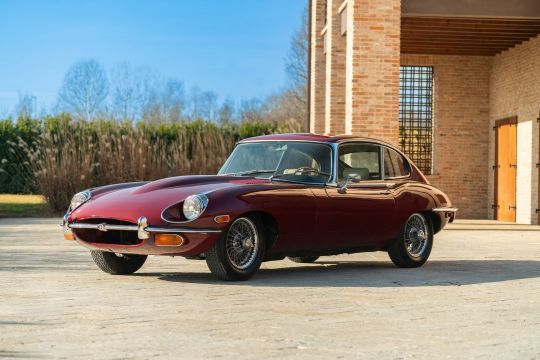


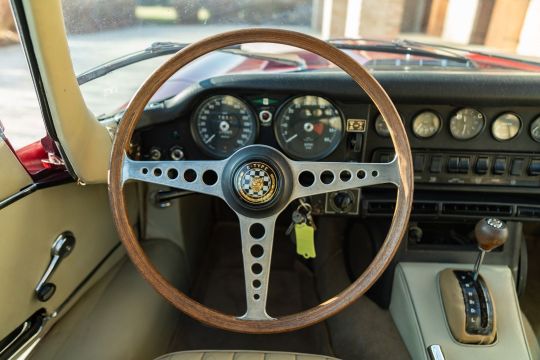
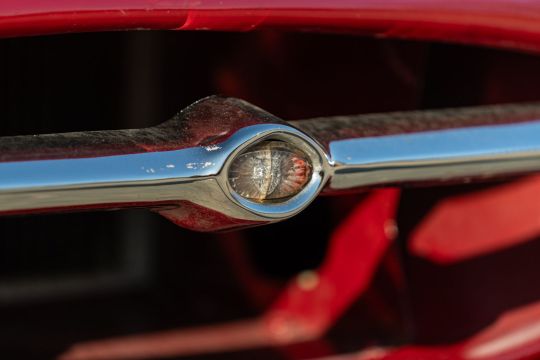


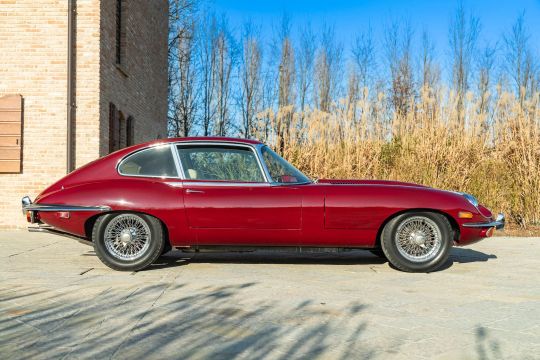

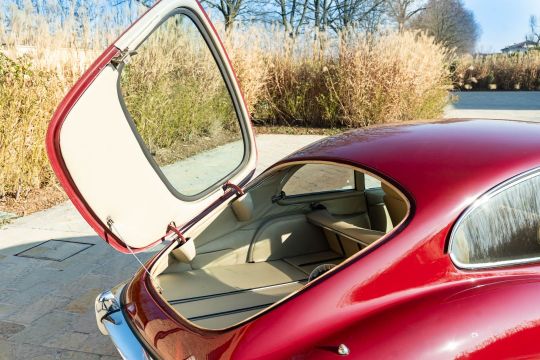

Jaguar E-Type Coupe II° Serie 4.2 L (2+2) 1970. - source Ruote da Sogno.
40 notes
·
View notes
Text



1968 Jaguar E-Type Coupé Series II
My tumblr-blogs: https://www.tumblr.com/blog/germancarssince1946 & https://www.tumblr.com/blog/frenchcarssince1946 & https://www.tumblr.com/blog/englishcarssince1946 & https://www.tumblr.com/blog/italiancarssince1946 & https://www.tumblr.com/blog/japanesecarssince1947
0 notes
Text
A Brief History of the Mazda Cosmo – Everything You Need To Know
The Mazda Cosmo – An Introduction
The Mazda Cosmo was born in the midst of the maelstrom of the 1960’s, the era of the Space Race between the Soviet Union, the United States, Britain, and the other democratic allies. In a sense the two rival political, economic and social systems were in direct and not particularly friendly competition with each other, and one of the areas in which that competition could be indulged in without actually getting into a nuclear war was the “Race for Space”.
It was in this environment of a hunger for technological advancement and prestige being given to those who made great strides in science and technology that a small Japanese car maker named Mazda were looking for a way to raise their company image and to thus raise their market share. Japan’s motorcycle and car makers, like Honda, were at that time making dramatic advances into the western world so Mazda’s leadership could see that if Soichiro Honda could do it then so could they.
Just as Honda had redefined what a motorcycle could be with their CB750, Mazda wanted to achieve a similar result with a motor car and realized that a good way to do that would be to pioneer newer technologies that other car makers hadn’t embraced. What technology could that be? It needed to be technology that would get people excited and interested, but it would need to be technology that would work with the existing fuel and maintenance infrastructure that mainstream conventional cars used.
The technology that jumped out as an obvious choice was the new Wankel rotary engine.
The Decision to use the Wankel Rotary Engine
The Wankel rotary engine had been first conceived in the years prior to 1951 by Felix Heinrich Wankel and he had made his first running prototype and tested it on February 1st, 1957. A number of companies purchased licenses to develop and use Wankel’s design, among them German car maker NSU and Japan’s Mazda.
Both NSU and Mazda would present cars powered by Wankel engines in 1967 but not before significant development work had been undertaken. The Wankel engine was new technology and had some major bugs that needed to be worked out before the engine could be used in a mass-produced production car. Mazda were more successful in achieving this than the Comotor joint venture between NSU and French car maker Citroën.
youtube
The major technical problem that needed to be solved in getting the Wankel engine into a usable state was the problem of “chatter marks” in the rotary engine’s housing caused by the rotor’s apex seals vibrating and impacting on the housing. It was Mazda’s engineers who came up with a decent solution to this problem initially by using hollow cast iron apex shields.
The prototype engine based on that solution was the 798cc (48.7 cu. in.) twin rotor L8A and it was used in two Mazda Cosmo prototypes in 1963. This solution was then further improved on by the use of aluminum/carbon apex seals. Legend has it that an engineer was inspired to try this when one day he was looking at the tip of his pencil and the thought struck him that carbon could be effectively used in the seals. This was then used in the next generation engine, the 982cc (60 cu. in.) twin rotor L10A, which was fitted in the car that was first shown to the public.
Mazda Cosmo Series I (1967-1968)
With work progressing on refining and debugging the radical Wankel rotary engine Mazda’s design staff got to work on the creation of a suitable vehicle with which to generate public interest both in the company and in their new rotary engine. In order to get the full attention of the automotive press one of the safest strategies is to create an exciting sports car.
British car maker Jaguar had demonstrated this both with their post-war Jaguar XK120, a car whose success came as a surprise for the company with orders flooding in to the extent that they had to actually put it into production – something that they had not originally intended to do.
Jaguar had repeated that success in 1961 when they showed their new E-Type which was so admired that even Enzo Ferrari described it as the “most beautiful car ever made”. Likewise American car maker Chevrolet had gained much admiration for their Corvette sports car and rival Ford had done likewise with their Mustang. So Mazda’s leadership could see that a sports car would be a relatively safe concept to roll the dice on.
The next question was how should the car look? Appearance and aesthetics are a make or break item when presenting a new car to a buying public. What was wanted was a car that would be beautiful like the E-Type, attractive to Americans like the Thunderbird, and reminiscent of a spaceship. The resulting car that emerged from the Mazda design studio featured a front end styling inspired by the E-Type, a rear end inspired by the Thunderbird, it was painted white just like a spaceship, and it was named “Cosmo” to capture the public imagination in the midst of the Space Race.
The Mazda Cosmo concept car was first shown at the 1964 Tokyo Motor Show and it garnered plenty of interest, no doubt there were eager people with check books in hand looking to make a Mazda Cosmo sized hole in their bank balances.
Mazda knew that although they had a working engine they still had development and extensive testing to do before they could risk releasing the car for public sale. The check books would need to go back into their pockets and the Cosmo money would have to remain in their bank accounts earning boring interest.
Mazda began thorough testing of the Mazda Cosmo pre-production cars in January 1965. There were 80 of these cars made and they were fitted with the 0810 version of the L10A engine. The engine rotor housing was made of sand cast aluminum which was chromed. Then the sides of the rotor housing were sprayed with molten carbon steel for added strength.
The rotors of these engines were cast iron while the eccentric shafts were chrome-molybdenum steel. This engine was fitted with a conventional Hitachi four barrel carburetor with a slightly unconventional twin ignition distributors and dual spark plugs in the combustion chambers.
The bodywork and suspension of the Mazda Cosmo was kept conventional with the body being a steel unibody, front suspension being fully independent with the tried and proven double “A” arms with coils springs, tubular shock absorbers, and an anti-roll bar.
Rear suspension featured leaf springs and a De Dion tube. Brakes were 10″ (284mm) discs at the front and 7.9″ (201mm) drums at the back, wheels were 14″. Brakes were not servo assisted, which was a common arrangement at that time and many sports car drivers preferred it because it gave a better feel than the power brakes commonly available at the time. The gearbox was an all synchromesh four speed manual and these Mazda gearboxes were very positive and smooth to use.
With its 982cc twin rotor engine producing 109hp @ 7,000rpm and 96lb/ft of torque the Series I Cosmo could do a standing to 60mph in 8.2 seconds, standing quarter mile in 16.4 seconds, and had a top speed of 115 mph (185 km/hr).
The car had a wheelbase of 86.6″ (2,200mm), an overall length of 163″ (4,140mm), and width of 62.8″ (1,595mm). Kerb weight was 2072lb (940kg).
With testing satisfactorily completed the Mazda Cosmo went into regular production on May 30th, 1967, so after an almost three year wait those who had waited were at last able to buy their car and Mazda was able to welcome all those nice crisp banknotes into company coffers.
The year following the car’s going on sale Mazda were confident enough in the car’s reliability to put it to the test in a very public way. Although the 24 Hours Le Mans is one of the most challenging motorsport events on earth Mazda decided to go one better and enter the 84 hour Marathon de la Route at Germany’s difficult Nürburgring circuit. Mazda entered two modestly modified cars in a field of fifty eight. The engines of the two competition cars were tuned up to 128hp, which was a modest increase over the road going model’s standard, to help ensure their reliability, and they were fitted with a side and peripheral port switching intake system, which featured a butterfly valve which would switch from the side to the peripheral port as the engine’s rpm increased.
The cars both performed well holding on to fourth and fifth places throughout most of the race. When one car did fail it was not the engine, but the axle that failed in the 82nd hour. The other car went on to take fourth place. This was a most satisfactory result and proved that the efforts invested into the research and development, and the extensive testing, had all paid off. Mazda were content with that single excursion into motor sport competition and did not attempt a full program.
Production of the Series I cars was just 343 and ended in June 1968.
Mazda Cosmo Series II (1968-1972)
The Series II Cosmo took over from the Series I in July 1968. This model was fitted with an updated engine, the L10B 0813, which produced 128hp and torque of 103lb/ft. With the more powerful engine the standing quarter mile time went down to 15.8 seconds and the top speed was a little north of 120 mph (193 km/hr).
The Series II was fitted with servo assisted brakes and a five speed manual gearbox. The wheelbase of the Series II was increased by 15″ bringing it up to 101.6″ both to provide additional room and also to improve the car’s ride qualities. These Series II cars had a very comfortable ride quality, not harsh as many sports cars tend to be but very much inclined towards long distance comfort.
The Series I and Series II cars were all hand assembled as a limited production model so build quality was kept high: these were “halo” cars intended to gain positive publicity for Mazda and so great effort went into them. They were in direct competition with Toyota’s 2000GT and they needed to meet at least the same quality standards.
Production of the Series II cars was 1,176 and ended in 1972.
The Series I and II Mazda Cosmo achieved everything Mazda had hoped for. The company’s cars became famous in part because of the halo effect of the Mazda Cosmo and the company were able to become a world leader in Wankel engine technology.
Sensibly Mazda marketed both Wankel engined cars and conventional engined cars in the same body styles so customers could choose either Wankel rotary performance or conventional car performance. The Mazda 929 of the 1970’s was an example. One disadvantage of the Wankel engine was that it gave poorer fuel consumption than a conventional engine.
In some markets this was made up for because a Wankel is significantly lower in its engine capacity for a given power and torque levels than a conventional four stroke engine. This placed the rotary engine car in a less expensive licensing category in markets such as Japan, which was a significant cost offset.
Mazda Cosmo AP/CD (1975-1981)
With the phasing out of the hand-built original Mazda Cosmo Series I and II Mazda decided to shed the space age image and build a Wankel engined car that looked more American in style. By 1975 the Space Race was pretty much over and cars like the Jaguar E-Type and 1960’s Ford Thunderbird were starting to look dated in the eyes of some.
The new car to wear the Cosmo name was not in any way derived from the original but instead was a new production car with a Wankel engine. The model was called the “AP” (Anti-Pollution) model in Japan and was the first car to pass Japan’s new 1976 exhaust emissions regulations. The AP received strong advertising and sold more than 20,000 units in the first 6 months of production.
Within three months of going on sale the car won Motor Fan Magazine’s “Car of the Year” award. In 1977 a model with a vinyl covered landau roof was also introduced: this was called the Cosmo L. In export markets this car was designated the Cosmo CD.
The export version of this model was marketed as the Mazda RX-5 and often sold in parallel with a piston engined identical model the Mazda 121. (Note: that model name would later be re-used for a sub-compact Mazda car).
The Mazda AP was made with two different Wankel engines; the AP/CD22 was fitted with an 1,146cc twin rotor type 12A engine, and the AP/CD23 was fitted with the 1,308cc 13B twin rotor engine. Two piston engine models were sold in parallel with the Wankel engine models; the Cosmo 1800 was fitted with a 1,769 cc inline four cylinder SOHC gasoline engine and the Cosmo 2000 was fitted with 1,970 cc SOHC four cylinder.
This model was built in two series just like the original Cosmo: the AP/CD Series I were made from 1975-1978 and the Series II from 1979-1981. The CD Series I cars were exported to the US and other markets but sales were poor so the Series II cars were made for Japan’s domestic market only where they remained popular.
The car was equipped with front independent suspension and a five link suspension at the rear. Brakes were servo assisted discs all around.
Mazda Series HB (1981-1989)
When the Cosmo AP was phased out it was replaced by the Series HB which was also sold in export markets as the Mazda 929 (Note: This would be the second export model to bear this name as a previous 1970’s car had also been called the “Mazda 929″).
The HB Cosmo was sold in both sedan and two door coupé versions and was offered with Wankel engine options, gasoline piston engine options, and a diesel piston engine option. By this stage Mazda had invested a great deal of research and development into the Wankel engine such that the engine had become quite sophisticated.
There were three rotary engine options; The 1.1 liter 12A-6PI (6PI=”six-port induction”), the turbocharged 12A Turbo, and the interesting 1.3 liter 13B-RESI. The 13B-RESI used “Rotary Engine Super Injection” in which the engine used Helmholtz Resonance created by the opening and closing of the intake ports in a two-level intake box to effectively provide positive intake port pressure in synchronization with the intake cycle. The 13B-RESI engine used Bosch L-Jetronic fuel injection and was only available with an automatic transmission.
The Mazda Cosmo fitted with the Wankel 12A Turbo was the fastest production car in Japan until it lost that crown to the Nissan R30 Skyline RS. Not only had the turbocharged rotary engine contributed to this but also the car’s aerodynamics: it boasted a drag coefficient of just 0.32.
The piston engine’s used for the HB Cosmo were a 1.8 liter SOHC four cylinder, two different 2.0 liter SOHC four cylinder, and a 2.2 liter four cylinder diesel.
Eunos Cosmo: Series JC (1990-1996)
The last car to wear the “Cosmo” name was Mazda’s Eunos Cosmo of the Series JC. Eunos was Mazda’s luxury brand name similar to Toyota’s Lexus. The Eunos Cosmo was a superb successor to the original Mazda Cosmo and outstripped even the Cosmo Rotary Turbo which was itself a fabulously exciting car.
The Eunos Cosmo was made with two engine options: The smaller engine was the twin turbocharged 13B-RE which featured twin 654cc rotors giving total capacity of 1,308cc. This engine was fitted with a Hitachi HT-15 primary turbocharger and a smaller HT-10 secondary. Engine power was 235hp.
The larger engine was the triple rotor 20B-REW. This was the first triple rotor production car engine in the world, and the first to be fitted with twin sequential turbochargers. The rotors of this engine were the same capacity as the 13B-RE; i.e. 654cc, and with three of these rotors the engine capacity became 1,962cc. This engine was mated to an electronically controlled four speed automatic transmission and produced 300hp. Torque was 280lb/ft torque @ 1,800rpm: suffice to say its performance was nicely adequate.
The Eunos Cosmo was made as a 1990’s cutting edge technology luxury vehicle and boasted a built in GPS navigation system, and the Palmnet serial data communication system for ECU-to-ECAT operation. Not content with that the car was fitted with what we would nowadays regard as an “old school” CRT touch screen for control of the climate control system, mobile phone, GPS, TV, radio and CD player.
The Eunos Cosmo marked a return by Mazda to an expensive limited production sports coupé and it was never exported but only made for the Japanese market. In Japan it was speed limited to 180km/hr 118.8mph) but if that speed limiter was disabled it could reach 255km/hr (158.4mph).
Mazda sold just 8,875 Eunos Cosmos with about 60% of those cars being fitted with the twin rotor 13B-RE engine and 40% being fitted with the triple rotor 20B-REW. It was an expensive automobile and after production ended in September 1995 Mazda did not make another vehicle in the same price bracket again.
Conclusion
The Mazda Cosmo Series I and II were the ice-breaker vehicles that not only looked space age, back when a space age looking car was a fashionable thing, but they broke completely new technological ground.
The Mazda Cosmo was the car that helped make Mazda a household name and so it was the foundation on which the company built their public identity. Mazda not only made a success of the Cosmo but they also developed and made a success of the Wankel rotary engine technology: something that looked impossibly difficult back in the 1960’s and indeed something that the NSU and Citroën Comotor joint venture had much less success with.
Thanks to Mazda and that first Cosmo, and then its Cosmo named successors and others such as the RX-8, Wankel engine had its time in the sun. It did not replace piston engines as perhaps Mazda had hoped that it would, but it became a viable alternative until emissions restrictions killed it off. Rumours now abound that new apex seal technology is going to bring the Wankel back into production, and it’s believed that Mazda is still developing rotaries in secret.
Photo Credits: Mazda, Bonhams, RM Sotheby’s
The post A Brief History of the Mazda Cosmo – Everything You Need To Know appeared first on Silodrome.
source https://silodrome.com/history-mazda-cosmo/
3 notes
·
View notes
